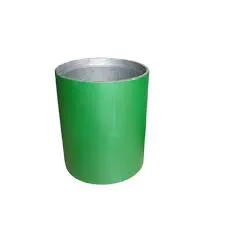- Afrikaans
- Albanian
- Amharic
- Arabic
- Armenian
- Azerbaijani
- Basque
- Belarusian
- Bengali
- Bosnian
- Bulgarian
- Catalan
- Cebuano
- Corsican
- Croatian
- Czech
- Danish
- Dutch
- English
- Esperanto
- Estonian
- Finnish
- French
- Frisian
- Galician
- Georgian
- German
- Greek
- Gujarati
- Haitian Creole
- hausa
- hawaiian
- Hebrew
- Hindi
- Miao
- Hungarian
- Icelandic
- igbo
- Indonesian
- irish
- Italian
- Japanese
- Javanese
- Kannada
- kazakh
- Khmer
- Rwandese
- Korean
- Kurdish
- Kyrgyz
- Lao
- Latin
- Latvian
- Lithuanian
- Luxembourgish
- Macedonian
- Malgashi
- Malay
- Malayalam
- Maltese
- Maori
- Marathi
- Mongolian
- Myanmar
- Nepali
- Norwegian
- Norwegian
- Occitan
- Pashto
- Persian
- Polish
- Portuguese
- Punjabi
- Romanian
- Russian
- Samoan
- Scottish Gaelic
- Serbian
- Sesotho
- Shona
- Sindhi
- Sinhala
- Slovak
- Slovenian
- Somali
- Spanish
- Sundanese
- Swahili
- Swedish
- Tagalog
- Tajik
- Tamil
- Tatar
- Telugu
- Thai
- Turkish
- Turkmen
- Ukrainian
- Urdu
- Uighur
- Uzbek
- Vietnamese
- Welsh
- Bantu
- Yiddish
- Yoruba
- Zulu
Casing Pup Joint – Essential Components for Drilling Operations
Understanding Casing Pup Joints in Oil and Gas Drilling
In the oil and gas industry, effective drilling operations are paramount to ensuring successful extraction of resources. One of the critical components in the drilling process is the casing pup joint. This seemingly simple device plays a vital role in the integrity and efficiency of well construction, helping to ensure that the drilling process runs smoothly and safely.
A casing pup joint is essentially a short length of pipe used to connect sections of casing during the drilling of an oil or gas well. Casing itself is a series of pipe segments that are installed in the wellbore to provide support and prevent the collapse of the well as it is drilled deeper. These joints allow for adjustments in the overall length and configuration of the casing, making them invaluable for customizing drilling operations according to specific geological or operational needs.
Casing pup joints come in various lengths, typically ranging from 2 to 10 feet, and can be made from different grades of steel depending on the environmental conditions and pressure levels they will encounter. Their design includes threaded ends that enable easy connection to other casing sections. This modular approach allows drillers to efficiently build up the total length of casing required for their drilling projects while providing flexibility in dealing with unforeseen challenges such as shifts in geological formations.
casing pup joint

The importance of casing pup joints cannot be overstated. During the drilling process, the wellbore may encounter varying pressures and temperatures, and casing pup joints help to accommodate these changes. Without proper support, the integrity of the wellbore could be compromised, leading to potential safety hazards and costly delays. The use of pup joints thus adds an extra layer of safety and reliability to the operation.
Moreover, casing pup joints are instrumental in facilitating the installation of casing strings that are designed to protect freshwater aquifers from contamination. By securing the wellbore with casing, these joints help to maintain the separation between hydrocarbon zones and freshwater sources, thus playing a crucial environmental role in the drilling process.
Drilling engineers and rig crews must ensure that casing pup joints are selected and installed correctly. Improper alignment or failure to account for the stresses placed on these joints can lead to mechanical failures or leaks, which can be catastrophic. Thus, thorough planning and precise execution are essential when working with casing pup joints.
In conclusion, casing pup joints are vital components in the drilling process of oil and gas wells. Their ability to provide flexibility, support, and safety makes them indispensable in modern drilling operations. As the oil and gas industry continues to evolve, the importance of reliable and durable casing solutions, including pup joints, will remain paramount in the pursuit of efficient and safe resource extraction. The ongoing development in materials and technology may further enhance the effectiveness of casing pup joints, ensuring their relevance in the future of drilling.
-
Tubing Pup Joints: Essential Components for Oil and Gas OperationsNewsJul.10,2025
-
Pup Joints: Essential Components for Reliable Drilling OperationsNewsJul.10,2025
-
Pipe Couplings: Connecting Your World EfficientlyNewsJul.10,2025
-
Mastering Oilfield Operations with Quality Tubing and CasingNewsJul.10,2025
-
High-Quality Casing Couplings for Every NeedNewsJul.10,2025
-
Boost Your Drilling Efficiency with Premium Crossover Tools & Seating NipplesNewsJul.10,2025







